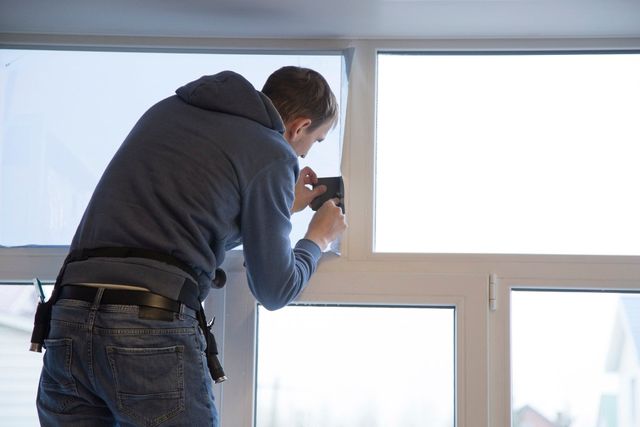Residential Window Tint: Block Harmful Rays Without Giving Up All-natural Light
Residential Window Tint: Block Harmful Rays Without Giving Up All-natural Light
Blog Article
Exactly How Residential Home Window Tinting Boosts Your Home's Power Efficiency
Residential home window tinting presents an engaging remedy for property owners seeking to boost power effectiveness within their living areas. By applying specialized films to windows, it successfully minimizes heat transfer, thereby supporting interior temperature levels and minimizing the requirement for excessive heating or cooling.
Understanding Home Window Tinting
Understanding home window tinting is important for house owners looking for to improve both convenience and power effectiveness in their space. Residential Window Tint. Window tinting includes the application of a slim film to the inside or outside surface of glass windows. This movie can significantly modulate the amount of sunshine and warmth that gets in a home, therefore influencing indoor environment conditions
There are numerous kinds of window tinting films available, each with unique buildings. For circumstances, colored films absorb solar power, while reflective films deflect it far from the glass surface. Ceramic movies supply a balance of presence and warm being rejected, making them a popular option amongst property owners. The effectiveness of home window tinting is usually measured by its Visible Light Transmission (VLT) percentage, which shows just how much light can pass via the movie.
Benefits of Power Performance
Home window tinting not only improves aesthetics however also plays a considerable function in boosting energy effectiveness within domestic rooms. By decreasing heat transfer through home windows, colored films create an extra steady indoor climate, which can lead to significant reductions in power consumption for cooling and heating. This power efficiency equates into reduced utility expenses, giving homeowners with considerable long-lasting savings.

Additionally, window tinting improves the convenience of living rooms. By minimizing glow and blocking harmful UV rays, tinted windows develop a more enjoyable setting, which can cause boosted wellness for owners. The defense against UV rays likewise aids maintain furniture and flooring from fading, adding to the longevity of family items.
Just How Tinting Functions
Tinting movies operate through a mix of sophisticated materials and modern technologies designed to control the amount of solar power entering a home. Primarily composed of polyester, these movies commonly integrate metal or ceramic particles that reflect and take in warmth. This twin capacity enables them to dramatically decrease the penetration of ultraviolet (UV) rays and infrared radiation while permitting noticeable light to pass through.
The efficiency of home window tinting is gauged by its solar heat gain coefficient (SHGC), which shows just how much solar power is transferred with the home window. Reduced SHGC worths are more effective as they represent better heat being rejected. Additionally, home window colors can feature a range of tones, enabling property owners to customize their visual preferences while boosting power efficiency.
In addition, these films work as a barrier, avoiding heat loss during chillier months by reflecting indoor warmth back into the space. This thermal insulation result enhances the air conditioning advantages acquired throughout warmer months, adding to a balanced interior environment year-round. By managing solar energy properly, domestic window tinting not just improves convenience but additionally plays an important function in lowering power intake and decreasing energy expenses.
Picking the Right Tint

There are different kinds of home window movies readily available, consisting of colored, metalized, and ceramic. Ceramic films give excellent warmth control without endangering presence and are highly durable, making them a prominent choice.
Visible light transmission (VLT) is another important aspect, as it suggests the quantity of natural light that can go through the tinted glass. Homeowners ought to select a color with a VLT that enhances their illumination choices while still supplying adequate glare decrease.
Furthermore, evaluating the solar warm gain coefficient (SHGC) can assist identify exactly how well a color can block warmth from sunshine. A reduced SHGC shows better warm control, inevitably improving energy performance.
Installment and Maintenance Tips
Correct installment and upkeep are essential elements in optimizing the benefits of residential home window tinting. Specialists additionally make use of specialized tools and techniques, which can boost the durability and performance of the tint.
Complying with installation, maintenance is necessary to extend the life of the window movie. It is suggested to wait at least 30 days before cleansing the colored windows to enable the adhesive to cure totally.
Resolving these concerns without delay can avoid more damage and preserve energy efficiency. By adhering to these installment and upkeep tips, house owners can ensure their window tinting continues to offer significant energy financial savings and comfort for years to come.
Conclusion
In final thought, domestic home window tinting serves as an effective option for boosting energy performance within homes. By reducing warm right here transfer and obstructing hazardous UV rays, window movies contribute to lower power intake and improved indoor convenience.
Home window tinting entails the application of a thin film to the interior or exterior surface area of over at this website glass windows. By lowering warm transfer through home windows, colored movies produce a more stable interior climate, which can lead to considerable reductions in energy consumption for home heating and cooling.The efficiency of home window tinting is gauged by its solar warmth gain coefficient (SHGC), which shows exactly how much solar power is transferred with the window. By taking care of solar energy properly, residential home window tinting not only boosts convenience yet likewise plays an essential role in minimizing power consumption and decreasing utility bills.
By reducing warmth transfer and obstructing unsafe UV rays, window movies add to reduce power consumption and improved indoor convenience.
Report this page